Benchmarks: CrystalDiskMark 3.0
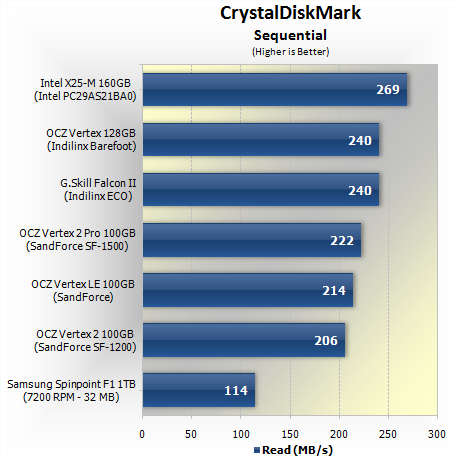
Using CrystalDiskMark 3.0 to measure the sequential read performance, we found the Intel X25-M to be the fastest SSD with a throughput of 269MB/s. Interestingly, the Indilinx Barefoot SSDs trump the new SandForce models here.
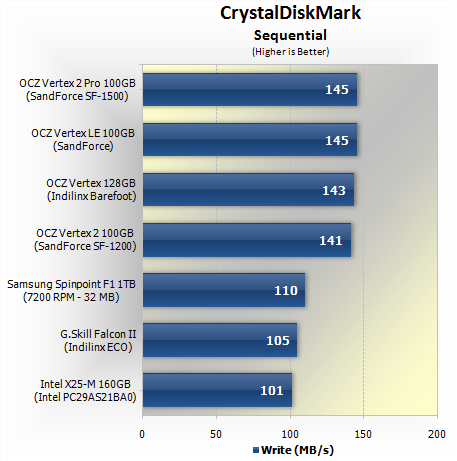
Although the SandForce based SSDs struggled in the sequential read tests, they are much stronger when measuring write performance. That said, the Vertex 2 is still a fraction slower than the original Vertex, though we are talking about a 1% performance disadvantage here.
The most significant difference is seen with the Intel X25-M which goes from being the fastest SSD for the read test to the slowest for the write test.
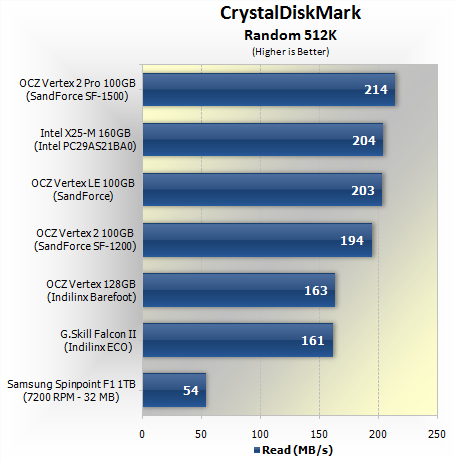
The read situation with CrystalDiskMark is much better for the SandForce based SSDs once we start to measure random performance. Here the Intel X25-M still beats the Vertex 2, but only by a small margin. Further, the Vertex 2 managed to beat the original Vertex by 19% as it was 31MB/s faster.
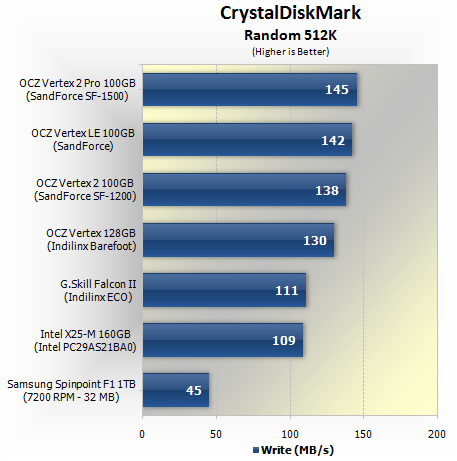
The random 512KB write results look even better for the Vertex 2. The drive spits out 138MB/s, making it considerably faster than the Intel X25-M, while it also beat the original Vertex by a 6% performance margin.
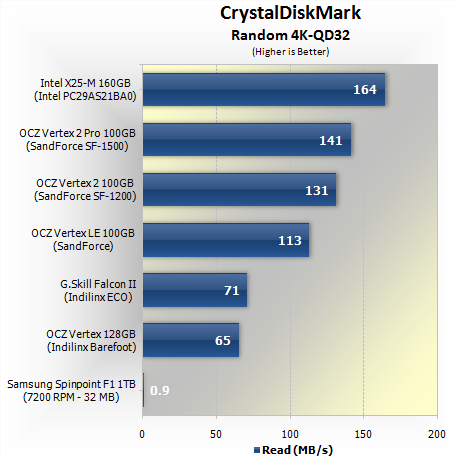
When measuring 4K random performance the Intel X25-M dominates the read charts, while the Vertex 2 is not too far behind delivering 100% faster speeds than the original Vertex drive. This has long been the Achilles' heel of SSD technology, but looking at these impressive results we can tell newer drives can handle small read and writes just fine.
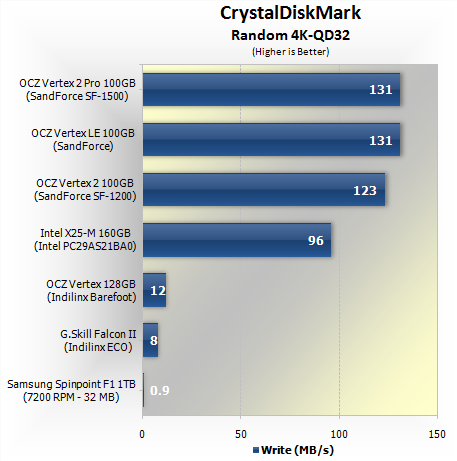
The Intel X25-M suffers a bit when measuring write performance, though compared to the original Vertex it is up to eight times faster.
The new Vertex 2 delivered 10x more performance than the original Vertex drive. With an impressive throughput of 123MB/s, the Vertex 2 is only a fraction slower than the Vertex LE and Vertex Pro SSDs.